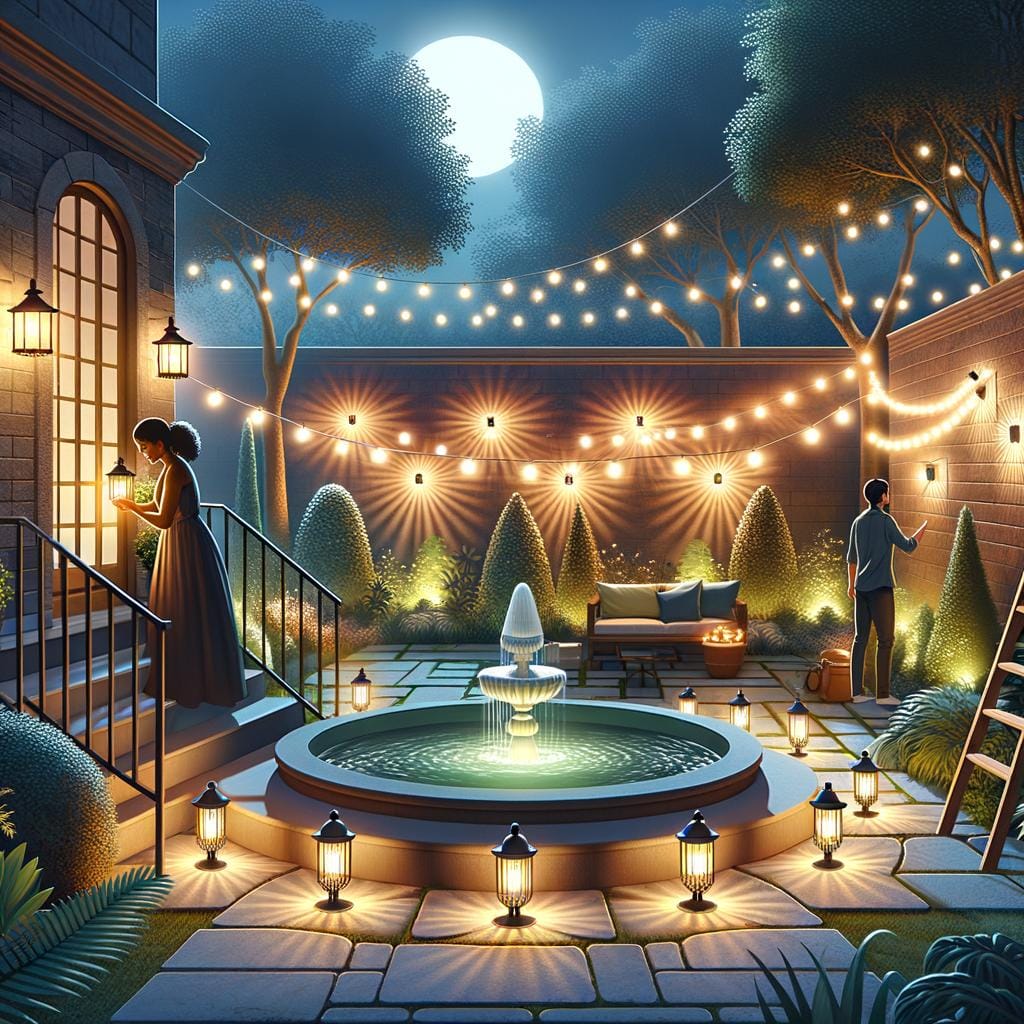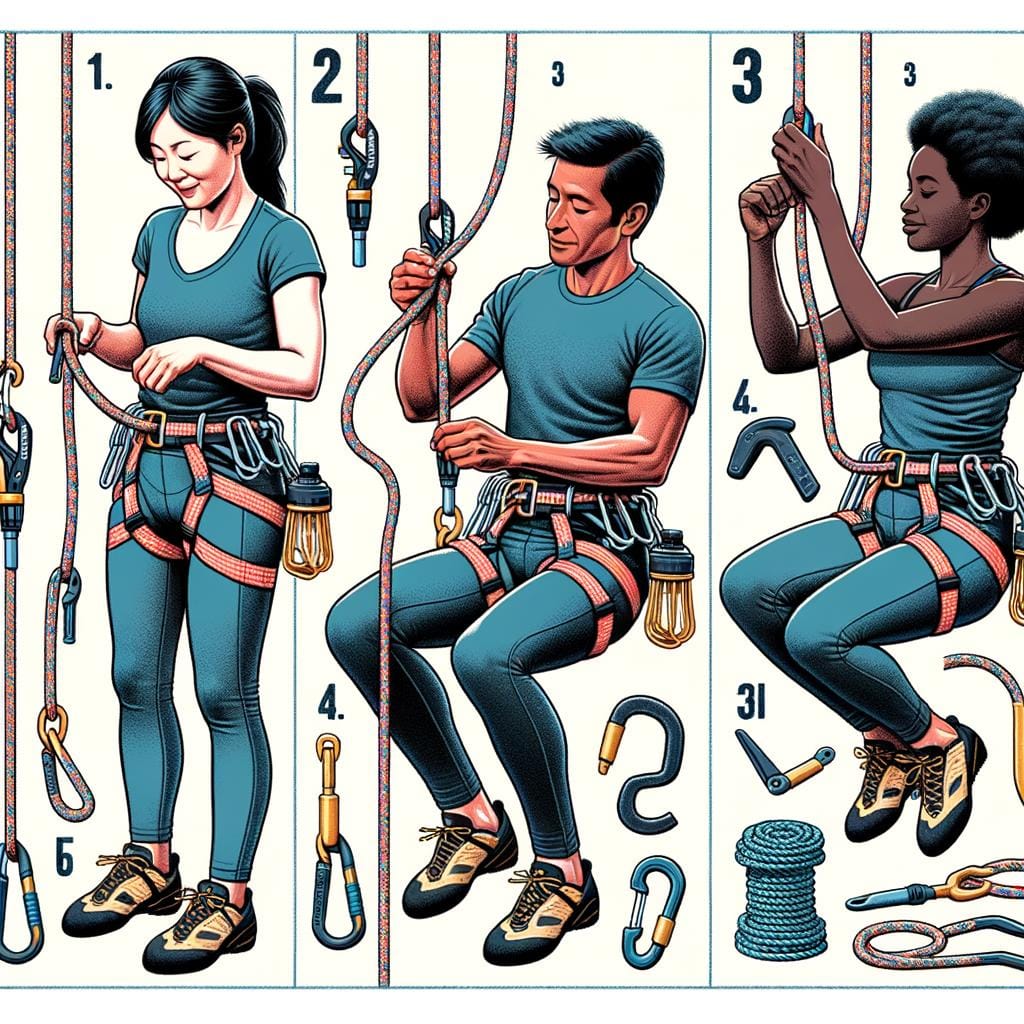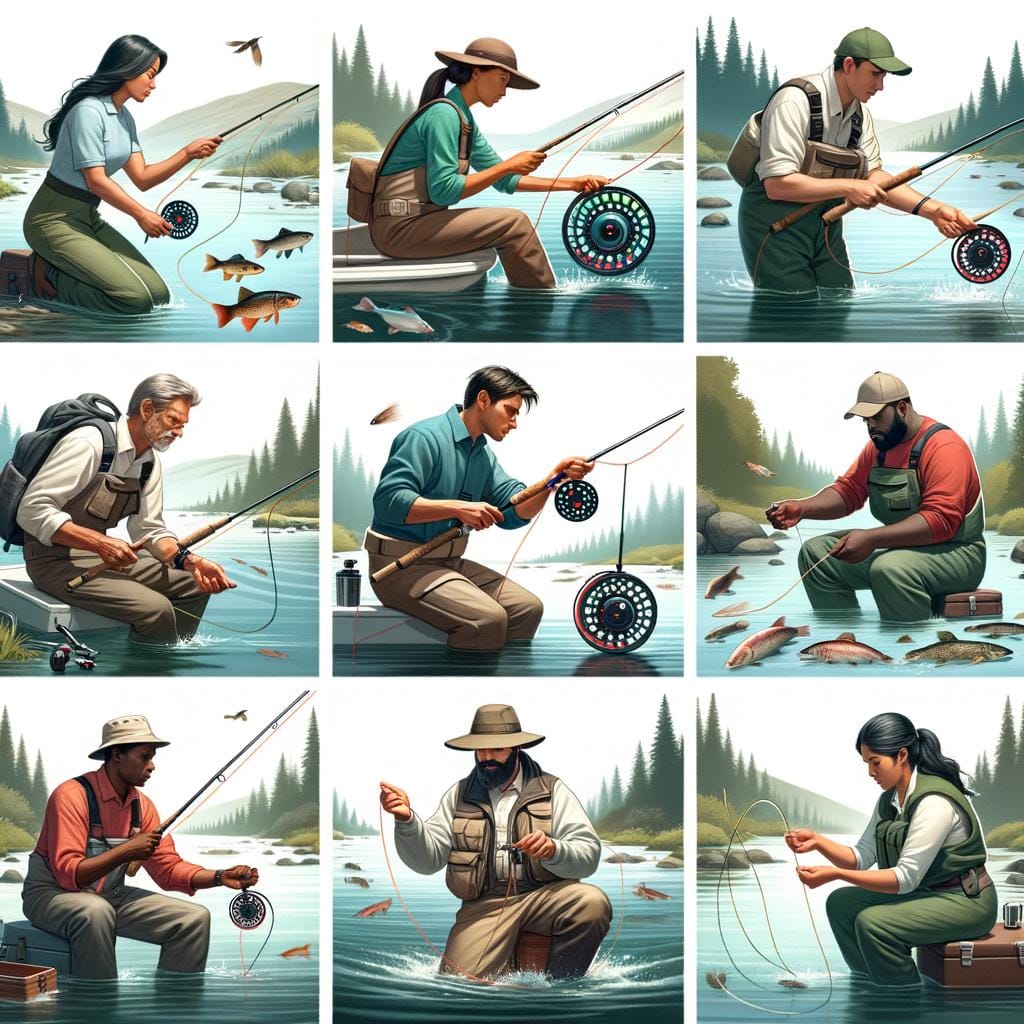Outdoor lighting techniques play a crucial role in enhancing the aesthetics and security of any outdoor space. The way outdoor lighting fixtures are placed, the type of bulbs used, and the ambiance created all contribute to the overall appeal and functionality of an outdoor area. Whether illuminating a pathway for safety or highlighting architectural features for visual interest, outdoor lighting can truly transform an outdoor space.
Beyond just providing visibility in the dark, outdoor lighting serves as a design element that can elevate the look of a home exterior. By strategically placing lights, homeowners can enhance their curb appeal, create a welcoming atmosphere for guests, and even increase the value of their property. Additionally, proper outdoor lighting can also act as a deterrent for would-be intruders, improving the overall security of the home.
Before diving into specific outdoor lighting techniques, it’s essential to consider various factors such as the layout of the outdoor space, architectural style of the home, and desired ambiance. With these considerations in mind, selecting the right fixtures, bulbs, and placement locations will be more effective in achieving both aesthetic and functional goals.
This article will delve into different types of fixtures available, how to choose appropriate bulbs, strategic placement tips, creating ambiance through lighting techniques, maintenance guidelines for longevity, safety precautions to follow during installation or use, and inspiring DIY projects to personalize outdoor lighting solutions.
Types of Outdoor Lighting Fixtures
Outdoor lighting fixtures play a crucial role in enhancing the aesthetic appeal and functionality of outdoor spaces. When it comes to selecting the right fixtures for your outdoor lighting design, there are various options to choose from. Here are some popular types of outdoor lighting fixtures that you can consider incorporating into your outdoor space:
- Wall Sconces: Wall sconces are versatile fixtures that can be mounted on exterior walls to provide both ambient and task lighting. They come in a variety of styles and finishes to complement different architectural designs.
- Spotlights: Spotlights are ideal for highlighting specific features in your outdoor space, such as trees, architectural details, or landscaping elements. They can create focal points and add drama to your outdoor lighting design.
- String Lights: String lights are perfect for creating a cozy and festive atmosphere in outdoor entertaining areas. They can be hung across patios, pergolas, or trees to add warmth and charm to the space.
- Post Lights: Post lights are typically used to illuminate pathways, driveways, or entryways. They come in various heights and styles, ranging from traditional lantern designs to modern LED fixtures.
When choosing outdoor lighting fixtures for your space, consider the style of your home, the scale of the outdoor area, and the intended use of the lights. By selecting the right mix of fixtures, you can create a well-balanced outdoor lighting design that enhances both the beauty and functionality of your outdoor space. Incorporating a variety of fixture types can also help you achieve different lighting effects and levels throughout your outdoor area.
Whether you opt for wall sconces for accent lighting or string lights for a whimsical touch, each type of fixture contributes to the overall ambiance of your outdoor space. Experimenting with different combinations of fixtures can help you create a custom outdoor lighting design that suits your personal style and enhances the usability of your outdoor living areas.
By carefully selecting and strategically placing these fixtures, you can transform your outdoor space into a welcoming retreat that is both visually stunning and functional.
Factors to Consider Before Installing Outdoor Lighting
Outdoor lighting can greatly enhance the overall appeal, safety, and functionality of any outdoor space. However, before diving into the world of outdoor lighting techniques, it is essential to consider several factors that will influence the final design. Understanding these considerations will help you create a cohesive and well-thought-out lighting plan that complements your outdoor area.
Layout of the Outdoor Space
One of the key factors to consider before installing outdoor lighting is the layout of the outdoor space. Take note of pathways, seating areas, architectural elements, landscaping features, and other focal points that you want to highlight. Properly illuminating these areas not only enhances aesthetics but also ensures safety by preventing accidents due to poor visibility during nighttime.
Architectural Style of the Home
Another important factor to take into account is the architectural style of your home. The outdoor lighting fixtures you choose should complement and enhance the existing design elements of your home. For example, modern homes may benefit from sleek and minimalist fixtures, while traditional or rustic homes might look better with more ornate or vintage-style lights.
Desired Ambiance
Finally, think about the ambiance you want to create with your outdoor lighting. Are you aiming for a cozy and intimate atmosphere for entertaining guests? Or perhaps a bright and welcoming vibe for family gatherings? By understanding the mood you wish to achieve, you can strategically place lights, adjust brightness levels, and incorporate different lighting techniques to set the right tone for your outdoor space.
By considering these factors before diving into your outdoor lighting project, you can ensure that your illumination design is both functional and visually appealing. Whether highlighting specific features or creating a warm ambiance for gatherings, thoughtful planning will result in a well-lit outdoor space that enhances both aesthetics and practicality.
Choosing the Right Bulbs
When it comes to outdoor lighting, choosing the right bulbs is essential to achieving your desired ambiance and maximizing energy efficiency. Here are some factors to consider when selecting the appropriate bulbs for your outdoor space:
- Brightness: Consider the level of brightness you need for different areas of your outdoor space. Brighter bulbs are ideal for task lighting or security purposes, while softer bulbs are great for creating a cozy atmosphere.
- Color Temperature: The color temperature of a bulb can greatly impact the overall mood of your outdoor space. Warmer tones (around 2700K) create a cozy and inviting atmosphere, while cooler tones (5000K or higher) are more suitable for security lighting.
- Energy Efficiency: Opt for LED bulbs, which are not only energy-efficient but also have a longer lifespan compared to traditional incandescent bulbs. Although LED bulbs may have a higher upfront cost, they will save you money in the long run through reduced energy consumption and fewer replacements.
By considering these factors and choosing the right bulbs for your outdoor lighting fixtures, you can create a well-balanced and aesthetically pleasing outdoor lighting design that meets both your functional and decorative needs.
Whether you are looking to illuminate pathways, highlight landscaping features, or simply create a warm ambiance for outdoor gatherings, selecting the appropriate bulbs based on brightness, color temperature, and energy efficiency is crucial. With advancements in technology, there is now a wide range of options available to suit every preference and budget when it comes to outdoor lighting techniques.
Placement of Outdoor Lights
Outdoor lighting plays a crucial role in enhancing the aesthetics and security of outdoor spaces. When it comes to outdoor lighting techniques, the placement of lights is key to achieving the desired effect. By strategically placing lights, you can highlight key features of your outdoor area, increase safety for guests and occupants, and create a warm and inviting atmosphere for all to enjoy.
Highlighting Key Features
When considering where to place outdoor lights, think about the key features you want to accentuate in your outdoor space. Whether it’s a beautiful garden, a water feature, or an architectural element of your home, placing lights strategically can draw attention to these focal points. For example, uplighting trees can add depth and drama to your landscape, while spotlighting architectural details can enhance the overall curb appeal of your home.
Increasing Safety
Another important aspect of outdoor lighting placement is enhancing safety around your property. Pathway lights along walkways can guide guests safely to your front door or backyard patio. Motion-sensor lights near entry points can deter intruders and provide additional security for your home. By illuminating dark areas around your property, you can also prevent accidents and ensure that everyone can navigate outdoor spaces with ease.
Creating a Welcoming Atmosphere
In addition to highlighting key features and increasing safety, strategically placed outdoor lights help create a welcoming atmosphere for outdoor gatherings or quiet evenings at home. Soft string lights draped over a patio or pergola can add warmth and charm to your outdoor living space.
Lighting fixtures near seating areas allow guests to relax comfortably while enjoying the ambiance you’ve created through thoughtful placement of lights. Remember that creating layers of light – including overhead lighting, task lighting, and ambient lighting – helps set the mood for any occasion in your outdoor space.
By carefully planning the placement of outdoor lights based on these tips, you can transform your outdoor area into a well-lit oasis that not only looks beautiful but also promotes safety and comfort for all who visit. With proper placement techniques in mind, you can achieve a stunning outdoor lighting design that enhances every aspect of your exterior space.
Creating Ambiance With Outdoor Lighting
When it comes to outdoor lighting techniques, creating ambiance is key to setting the mood in your outdoor space. One effective method is layering lights, which involves using various light sources at different levels to add depth and dimension.
For example, you can combine overhead string lights with ground-level lanterns or install spotlights on trees to create a dramatic effect. By layering lights, you can transform a simple outdoor area into a cozy and inviting space for entertaining or relaxation.
In addition to layering lights, highlighting textures is another technique that can enhance the ambiance of your outdoor space. By strategically placing lights to illuminate textured surfaces like stone walls, brick pathways, or wooden fences, you can create visual interest and depth.
Consider using uplights to accentuate these textures and add warmth to your outdoor environment. Whether you want to highlight architectural features or simply add a touch of elegance to your backyard, focusing on textures with outdoor lighting can make a significant impact.
Moreover, incorporating dimmers in your outdoor lighting design allows you to adjust the brightness and create the desired atmosphere for any occasion. Dimmers provide versatility by enabling you to control the intensity of light fixtures based on the time of day or specific activities.
For example, dimming the lights during an evening gathering can enhance intimacy and coziness, while increasing brightness for safety purposes when children are playing outdoors. This flexibility in lighting levels adds a dynamic element to your outdoor space and allows you to customize the ambiance according to your preferences.
| Outdoor Lighting Technique | Description |
|---|---|
| Layering Lights | Combining different light sources at varying heights for depth |
| Highlighting Textures | Illuminating textured surfaces like stone walls or wooden fences |
| Incorporating Dimmers | Adjusting brightness levels for different atmospheres and activities |
Maintenance and Safety
Outdoor lighting not only enhances the aesthetics of your outdoor space but also plays a crucial role in ensuring security and safety. However, to fully benefit from outdoor lighting, it is essential to properly maintain the fixtures. Regular maintenance can help prolong the lifespan of your outdoor lights and ensure they operate efficiently. One key aspect of maintenance is cleaning the fixtures to remove dirt, debris, and any other build-up that can affect the light output.
In addition to regular cleaning, it is important to check for any signs of wear and tear on the fixtures. This includes inspecting wires for damage, checking for loose connections, and ensuring that bulbs are securely in place. Addressing any issues promptly can prevent more significant problems in the future that may require costly repairs or replacements. Furthermore, following manufacturer’s guidelines for maintenance and care can help keep your outdoor lighting fixtures in top condition.
When installing or using outdoor lighting fixtures, safety should always be a top priority. Proper installation techniques should be followed to prevent accidents or hazards. This includes securing lights properly, using waterproof materials where necessary, and keeping electrical connections protected from the elements. Additionally, it is crucial to use outdoor lights that are intended for exterior use and labeled as such to ensure they can withstand exposure to weather conditions like rain, snow, and UV rays.
Here Is Some Relevant Data on Maintaining Outdoor Lighting
| Maintenance Task | Frequency |
|---|---|
| Clean fixtures | Every 3-6 months |
| Inspect wiring | Annually |
| Replace bulbs | As needed |
DIY Outdoor Lighting Projects
In conclusion, outdoor lighting plays a crucial role in enhancing the aesthetics and security of any outdoor space. By choosing the right fixtures, bulbs, and strategically placing lights, homeowners can create a welcoming atmosphere while highlighting key features of their property. The techniques discussed in this article offer valuable insights into maximizing the potential of outdoor lighting to transform an ordinary space into a stunning one.
One key aspect to consider when embarking on outdoor lighting projects is creating ambiance. Utilizing techniques like layering lights, highlighting textures, and incorporating dimmers can greatly impact the mood and feel of the space. These creative strategies not only enhance the visual appeal but also make outdoor areas more inviting and enjoyable for gatherings or relaxation.
As with any home improvement project, it is essential to prioritize maintenance and safety when dealing with outdoor lighting fixtures. Regular care and upkeep will ensure that the lights continue to function effectively while following safety precautions during installation and use is crucial for preventing accidents. By implementing the tips provided in this article, homeowners can achieve both a beautiful and safe outdoor lighting design that will be enjoyed for years to come.
Frequently Asked Questions
How Do You Arrange Outdoor Lights?
When arranging outdoor lights, it is important to consider the layout of your outdoor space and the areas you want to highlight. Pathway lights can help guide guests, while uplights can illuminate trees or architectural features. String lights are great for creating a cozy ambiance, while spotlights can be used to focus on specific areas.
How Do I Illuminate the Outside of My House?
Illuminating the outside of your house can enhance its curb appeal and add a layer of security. Consider using wall-mounted fixtures by doorways for practical lighting, while landscape lighting can highlight gardens or walkways. Motion-activated lights are also a good option for increasing security and deterring intruders.
What Type of Lighting Should Be Used in Outdoor Areas?
Different outdoor areas require different types of lighting to create the right atmosphere. Soft, warm lighting works well in lounging areas like patios or decks, while brighter task lighting may be needed in cooking or dining spaces.
For safety reasons, pathways should be well-lit with low-level lights or bollards to prevent tripping hazards and guide movement around the yard.

An avid outdoor enthusiast, writer, and environmental advocate who has spent over two decades exploring the world’s most breathtaking landscapes. With a background in environmental science and a passion for adventure, Frances combines her love for nature with her talent for storytelling to inspire others to embark on their own outdoor journeys.





